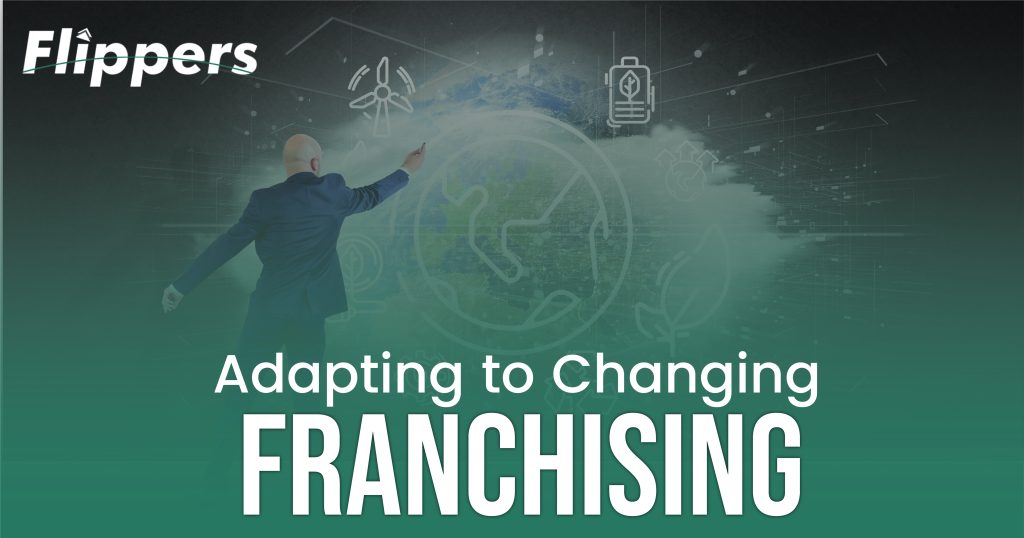Adapting to Changing Business Environments
In today’s fast-paced world, the business environment is constantly evolving. Trends shift, consumer preferences change, and new technologies emerge at lightning speed. For entrepreneurs and franchise owners alike, navigating this ever-changing landscape can be a daunting challenge. However, those who thrive in these conditions share one key trait: adaptability. The ability to pivot quickly not only helps businesses stay relevant but also positions them for long-term success. From startups to established corporations, every organization faces moments of uncertainty. Embracing change isn’t just beneficial; it’s essential for survival. Let’s explore how you can adapt your strategies and mindset to meet the demands of a dynamic business environment while ensuring that your company continues to flourish amidst challenges and opportunities alike.
Dynamics of a Changing Business Landscape
The business landscape is in a constant state of flux. New players enter the market daily, and established companies must evolve or risk becoming obsolete. This competition fuels innovation and pushes businesses to think outside the box. Consumer behavior also shifts rapidly due to social media, economic factors, and global events. What was popular last year may not hold the same appeal today. Understanding your audience’s evolving needs is crucial for staying ahead. Moreover, regulatory changes can significantly impact operations. Adapting to these legal frameworks requires agility and foresight from business leaders. Market trends are influenced by technological advancements as well. Companies that leverage emerging technologies often find themselves at an advantage over their less adaptable counterparts. In this dynamic environment, firms must remain vigilant and proactive in assessing risks and opportunities that arise on the horizon.
Adaptability
Adaptability is vital in today’s fast-paced business environment. Companies that embrace change can seize new opportunities and navigate challenges effectively. Staying flexible allows businesses to pivot strategies when market demands shift. This responsiveness sets successful organizations apart from their competitors. Moreover, adaptability fosters innovation. Teams encouraged to experiment often find creative solutions that drive growth and efficiency.
In franchise models, this quality becomes even more crucial as local markets may vary significantly. Tailoring approaches based on regional trends ensures relevance and customer satisfaction. Building a culture of adaptability also enhances employee engagement. When teams feel empowered to embrace change, they are more invested in the company’s vision and goals. Embracing adaptability nurtures resilience which is an essential trait for long-term sustainability in any business landscape.
Acknowledging Technological Advancements
Embracing technological advancements is no longer optional for businesses aiming to thrive. The rate of innovation in today’s landscape can be overwhelming, yet it offers countless opportunities. From artificial intelligence to blockchain, technology reshapes daily operations and customer interactions. Businesses that leverage these tools gain a competitive edge, enhancing efficiency and decision-making processes. Adopting new technologies also fosters creativity within teams. Employees are inspired to think outside the box when they have access to modern solutions that streamline tasks or enhance collaboration. Consumers expect brands to stay ahead of trends. Companies seen as tech-savvy tend to attract more customers who value innovation and responsiveness. It’s essential for franchise owners and managers alike to invest time in understanding emerging technologies. This commitment not only drives growth but also cultivates a culture of adaptability throughout the organization.
Role of Leadership in Navigating Change
Leadership is crucial in navigating the complexities of a changing business environment. Strong leaders set the tone for adaptability and resilience within their organizations. They communicate a clear vision, helping teams understand why change is necessary. This clarity fosters trust and encourages employees to embrace new directions. Effective leaders also prioritize open communication. They invite feedback, creating an environment where ideas can flow freely. This collaboration empowers team members to contribute during transitional phases. By demonstrating flexibility in decision-making and problem-solving, they inspire others to follow suit. Investing in leadership development further enhances this dynamic. Training programs focused on change management equip leaders with essential skills needed for guiding teams through uncertainty effectively. When leadership aligns with the evolving landscape, businesses are better positioned not just to survive but thrive amidst challenges.
Building a Resilient and Agile Workforce
A resilient and agile workforce is essential for thriving in today’s unpredictable business environment. Employees who can adapt quickly to change foster innovation and drive growth. To build this type of team, organizations must prioritize continuous learning. Encourage staff to pursue new skills through training programs and workshops. This investment not only enhances individual capabilities but also strengthens the entire organization. Flexibility in work arrangements can further enhance agility. Offer options like remote work or flexible hours, allowing employees to balance personal responsibilities with professional demands. Cultivating a culture of open communication is vital as well. When team members feel comfortable sharing ideas and feedback, they are more likely to contribute creatively during times of uncertainty. Celebrate wins together; it reinforces commitment and fosters a strong sense of community within the business framework.
Innovating in Times of Uncertainty
Innovation often thrives in uncertainty. When the landscape shifts, new opportunities emerge. Businesses that dare to think differently can carve out a niche for themselves. During challenging times, creativity becomes essential. Companies must tap into their resources and encourage fresh ideas from all levels of the organization. This is where diverse perspectives shine. Experimentation plays a crucial role in this process. Testing concepts quickly allows businesses to pivot when something isn’t working while also honing successful strategies rapidly. Customer feedback should guide innovation efforts. Understanding client needs during turbulent times creates products or services tailored to current demands. Collaboration with partners can also spark inventive solutions. Joining forces with other brands can lead to groundbreaking approaches that redefine market expectations. Embracing change fosters an environment ripe for transformation and growth amidst unpredictability.
Learning from Past Business Transformations
History holds valuable lessons for today’s business environment. Companies like IBM and Netflix transformed to stay relevant as market demands shifted. These examples show how embracing change can lead to long-lasting success. When Blockbuster ignored the rise of streaming, it faced decline. Learning from this missed opportunity is crucial for businesses now. Adapting quickly avoids similar pitfalls. Successful transformations often involve a culture shift within an organization. Employees should feel empowered to innovate and suggest changes without fear of failure. Examining past transformations equips current leaders with insights; they illuminate paths forward in uncertain times. Embracing history prepares franchises and businesses alike for future challenges while fostering a mindset geared towards growth and resilience.
Developing a Strategy for Future-Proofing Your Business
Creating a strategy for future-proofing your business involves proactive planning. Start by analyzing industry trends and consumer behaviors. This insight will help identify potential disruptions. Next, focus on flexibility within your operations. Agile processes allow quick pivots when unexpected changes arise. Implementing scalable solutions can prepare you to handle growth or downturns seamlessly. Invest in continuous learning for your team. Encourage professional development to keep skills relevant and innovative ideas flowing. A knowledgeable workforce is crucial in adapting to new challenges. Leverage data analytics for informed decision-making. Understanding market dynamics through solid data helps anticipate shifts before they happen. Foster a culture of innovation within the organization. Create an environment where employees feel empowered to explore creative solutions and experiment with new concepts without fear of failure.
Conclusion
Adapting to a changing business environment is not just an option; it’s a necessity. Companies that embrace change, leverage technology, and foster resilient teams will stand the test of time. The future belongs to those who can pivot quickly and innovate amid uncertainty.


